 |
BusTalk
A Community Discussing Buses and Bus Operations Worldwide!
|
| View previous topic :: View next topic |
| Author |
Message |
Q65A
Age: 66
Joined: 17 Apr 2007
Posts: 1769
Location: Central NJ
|
 Posted: Thu Feb 28, 2008 4:28 pm Post subject: Historical Buses of New York: 40-Foot GM Old Looks (Part 2) Posted: Thu Feb 28, 2008 4:28 pm Post subject: Historical Buses of New York: 40-Foot GM Old Looks (Part 2) |
 |
|
| In the years following GM’s introduction of the TDH-5101, transit operators across the U.S. and Canada embraced the 40-foot transit coach with great enthusiasm. This was not a surprise. Bus operators during the post-World War II and Korean War years were struggling with two major issues: an extended period of inflation (largely due to postwar demands for wage increases by workers in many industries) and reduced public transit ridership (largely due to the availability of moderately-priced automobiles in the U.S.). Further fueling the demand for new transportation equipment of all types were two additional factors: transportation fleets that had performed at extraordinarily high levels during the World War II years were old and worn out beyond economical repair, while tensions in Korea sparked fears that the Federal government might impose civilian production restrictions as they had done during World War II. As has been noted, larger buses offered attractive cost savings opportunities to transit agencies, some of which already were shifting from private to municipal ownership. During the 15 year period from 1945 to 1960, New York City operators clearly were very much affected by these overarching economic and social factors, and their equipment purchases of the time reflected their preoccupation with achieving operating cost efficiencies. In 1948, the Board of Transportation led the industry by purchasing a 900-unit fleet of modern, larger-sized buses (i.e. 500 TDH4510’s and 400 TDH-5101’s) either to motorize Brooklyn streetcar lines or to replace older buses originally purchased by private carriers in Queens and Staten Island. Beginning in 1952, most of the PBL’s in NYC also began purchasing 40-foot GM Old Looks in large numbers. By the end of the GM Old Look era in 1959, every NYC transit operator except Avenue B & East Broadway Transit would acquire substantial fleets of 40-foot buses from GM. This trend would continue unabated into both the New Look and ADB eras. Competitive brands like ACF-Brill, Mack, Twin Coach and White also would join GM in the move to longer transit buses during this period. GM enjoyed moderate success with the TDH-5103. Built from 1949 to 1953, it was a full-size transit bus (102” width and 40-foot length) equipped with leaf spring suspension; 951 units were sold, but none were sold new to NYC bus operators. Perhaps convinced of the merits of a 40-footer but still a bit shy about the 102” width, the PBL’s in NYC instead bought the seldom-remarked TDH-5104, the 96” wide companion to the better-selling TDH-5103. This model was rarely seen nationwide. Sold only from 1952 to 1953, NYC operators took 110 of the 162 units built. FACCO bought the biggest fleet of 5104’s: FACCO ordered 50 units (#’s 2502-2551) built in November 1952. As a perennial GM loyalist, GBL naturally had to add 5104’s to its growing collection of postwar GM diesels: GBL #’s 351-365 were built in September 1952. Surface Transportation took 10 units (ST #’s1050-1059, built in September 1953), while TCC took 15 buses (TCC #’s 1181-1195, built in September 1952). Queens-Nassau Transit took the “40-foot plunge” in October 1952 with twenty units (#’s 801-820, built in October 1952). In typical fashion, NYCO still ignored 40-footers, while Avenue B & East Broadway and JBI stayed with Mack. BOT also placed several new bus orders from Mack during this period, opting to wait a few years before purchasing additional GM buses. Unfortunately, no NYC-area TDH-5104’s were preserved. |
|
| Back to top |
|
 |
Mr. Linsky
BusTalk's Offical Welcoming Committee

Joined: 16 Apr 2007
Posts: 5071
Location: BRENTWOOD, CA. - WOODMERE, N.Y.
|
 Posted: Thu Feb 28, 2008 5:55 pm Post subject: Posted: Thu Feb 28, 2008 5:55 pm Post subject: |
 |
|
Bob,
Great job on the 5104's.
Have attached complements to your essay.
Thanks for sharing.
Photos borrowed for educational purposes only.
Mr. Linsky - Green Bus Lines, Inc., Jamaica, NY
1952 GM Ad Featuring the TDH 5104
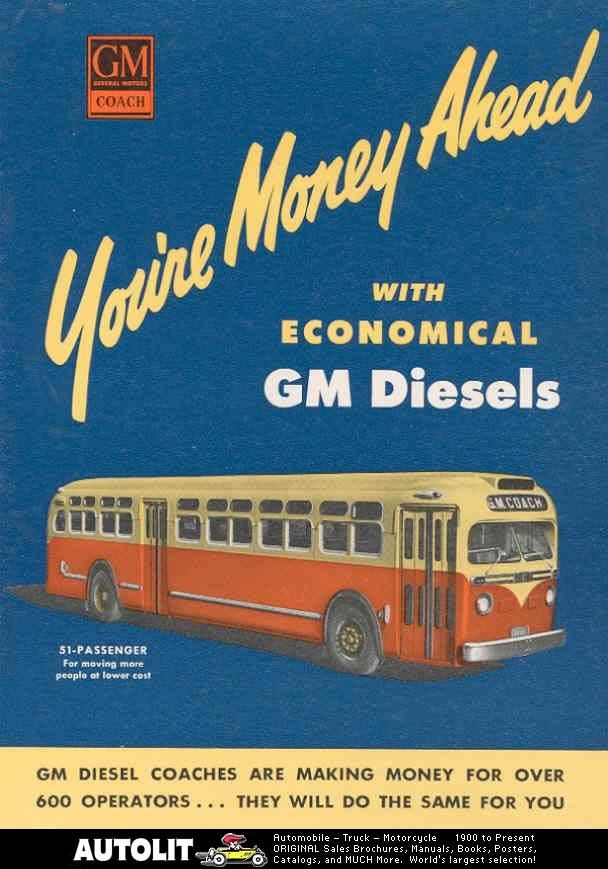
1952 GM TDH 5104 - Green Bus Lines, Inc. # 363
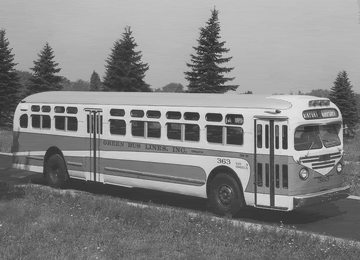
1952 GM TDH 5104 - Green Bus Lines, Inc. # 361
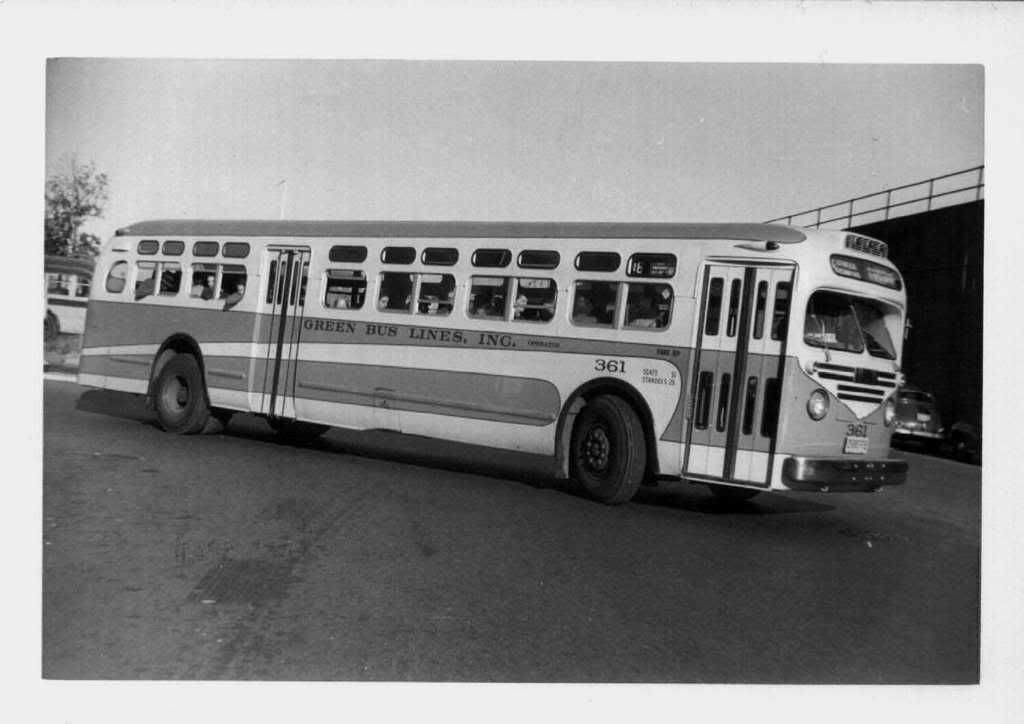
1952 GM TDH 5104 - Queens/Nassau Transit Lines $ 814

1952 GM TDH 5104 - Triboro Coach Corporation # 1191
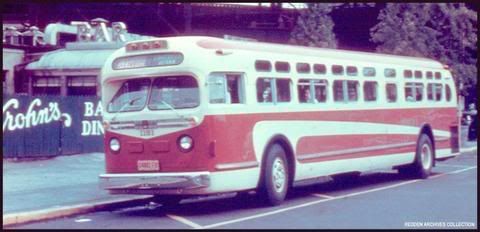 |
|
| Back to top |
|
 |
Q65A
Age: 66
Joined: 17 Apr 2007
Posts: 1769
Location: Central NJ
|
 Posted: Mon Mar 17, 2008 9:08 pm Post subject: Posted: Mon Mar 17, 2008 9:08 pm Post subject: |
 |
|
| The photo of Queens Nassau Transit Lines 814 illustrates how that carrier and successor Queens Transit Corp. ordered their TDH-5104's and TDH-5106's. Those amber "lighted arrow" front turn signals were accompanied by similar red "lighted arrows" mounted in the middle of each of the rear engine compartment door panels. These signals used 2 bulbs per fixture and were not used by other NYC bus operators. They were specified on many PSCT Old Looks operated in NJ. QNTL 814 lacks the armored-type side directional signals that were used on QTC's TDH-5106's (some QTC Old Looks used the "beehive" type side directionals). |
|
| Back to top |
|
 |
Mr. Linsky
BusTalk's Offical Welcoming Committee

Joined: 16 Apr 2007
Posts: 5071
Location: BRENTWOOD, CA. - WOODMERE, N.Y.
|
 Posted: Tue Mar 18, 2008 1:27 am Post subject: Posted: Tue Mar 18, 2008 1:27 am Post subject: |
 |
|
Bob,
It's interesting to note that the GM ad model above also has the special 'larger than life' signals which I had always admired on the Queens/Nassau buses.
I can only assume that these devices were an option that most operators shied away from.
Green Line opted to spend extra on the two additional stainless steel wings under the windshield which really served no purpose whatever! (go figure!).
The only other New York metropolitan area operator that I know of that also used the more distinctive signals was Schenck Transportation of Floral Park, L.I. (see below).
Photo courtesy of Vince Syrek.
Mr. Linsky - Green Bus Lines, Inc., Jamaica, NY
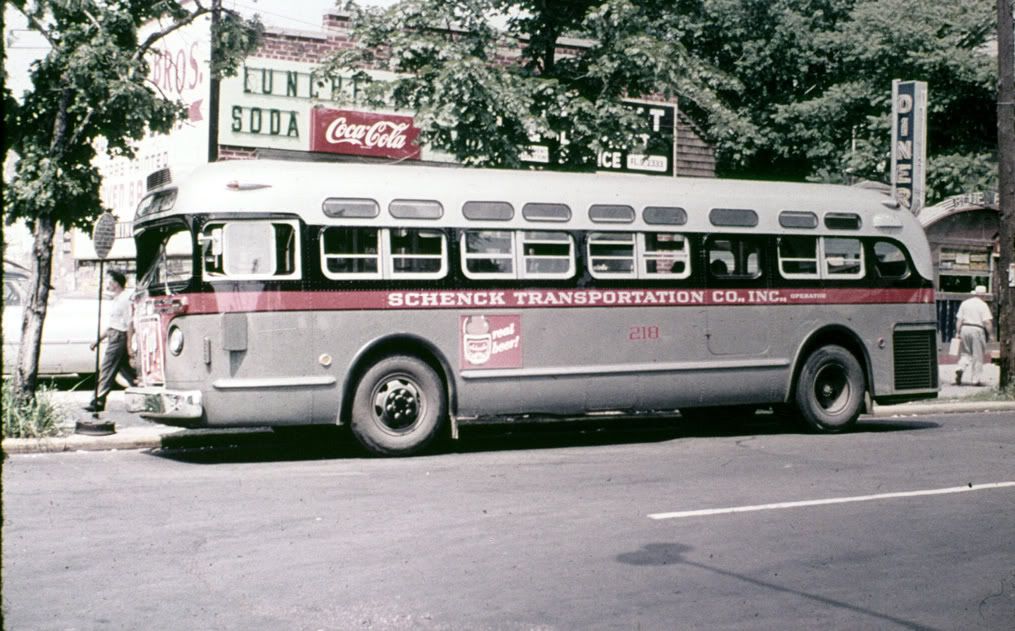 |
|
| Back to top |
|
 |
|
|
You cannot post new topics in this forum
You cannot reply to topics in this forum
You cannot edit your posts in this forum
You cannot delete your posts in this forum
You cannot vote in polls in this forum
You can attach files in this forum
You can download files in this forum
|
Powered by phpBB © 2001, 2005 phpBB Group
|








